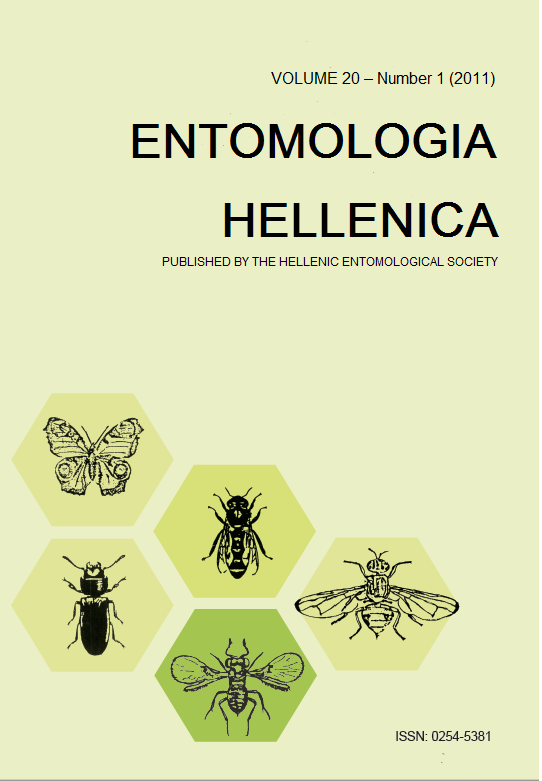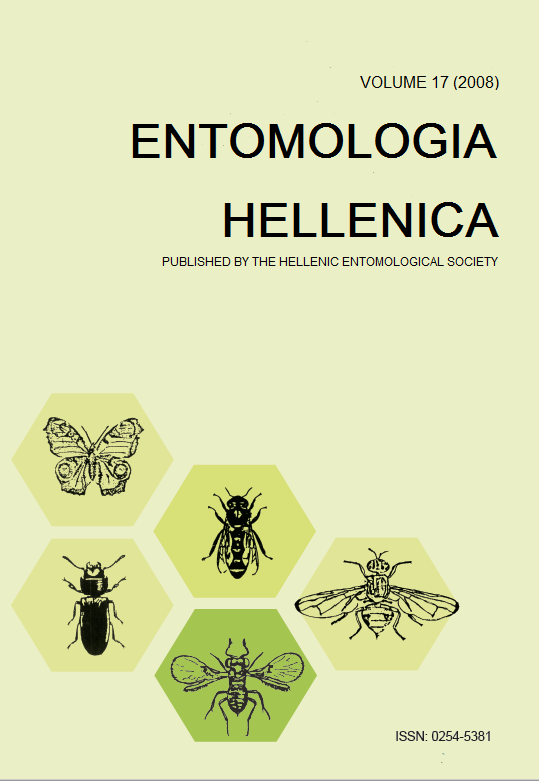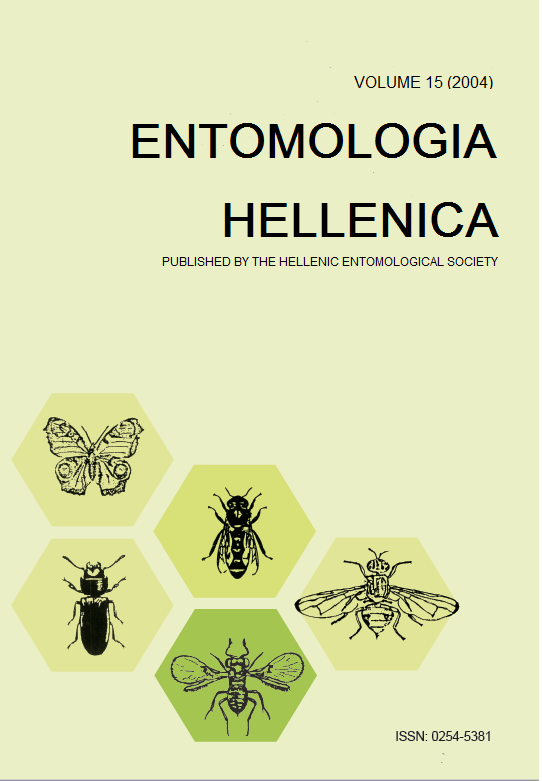Αξιολόγηση μη γραμμικών μαθηματικών προτύπων για την περιγραφή της ανάπτυξης και της γονιμότητας της καρπόκαψας της μηλιάς σε σταθερές θερμοκρασίες
Περίληψη
Μελετήθηκε η ανάπτυξη των ατελών σταδίων και η γονιμότητα των θηλέων της καρπόκαψας της μηλιάς Cydia pomonella (Linnaeus) (Lepidoptera: Tortricidae) σε σταθερές θερμοκρασίες. Για την καλύτερη περιγραφή των δύο αυτών βιολογικών παραμέτρων ακολούθησε αξιολόγηση μη γραμμικών μαθηματικών υποδειγμάτων η οποία, εκτός από τον συντελεστή προσδιορισμού (R2) και το άθροισμα τετραγώνων του υπολοίπου (RSS), βασίστηκε επιπλέον και στον προσαρμοσμένο συντελεστή προσδιορισμού (R2adj) και στο πληροφοριακό κριτήριο του Akaike (Akaike information criterion - AIC). Δοκιμάστηκαν οι εξισώσεις των Enkegaard, Αναλυτή, Bieri 1 και Bieri 2, οι οποίες έδειξαν καλή προσαρμογή στα δεδομένα, ιδιαίτερα της ανάπτυξης των ατελών σταδίων [R2, R2adj, RSS και AIC κυμάνθηκαν από 0,9673-0,9917, 0,8601-0,9861, 0,08-6,7x10-4 και (-75,29) – (-46,26) αντίστοιχα]. Η ιδανική θερμοκρασία ανάπτυξης (Topt) και το ανώτερο θερμοκρασιακό όριο (Tmax) υπολογίστηκαν ικανοποιητικά από όλα τα πρότυπα (Topt: 29,9-31,2oC και Tmax: 35,9-36,7oC). Το κατώτερο θερμοκρασιακό όριο (Tmin) υπολογίστηκε ικανοποιητικά από την εξίσωση Bieri-1 (9,9-10,8oC) ενώ υποεκτιμήθηκε από την εξίσωση Αναλυτή (7,0-8,4oC). Στα δεδομένα της γονιμότητας υπήρξε καλύτερη προσαρμογή στους 30oC, (δηλαδή κοντά στην ιδανική θερμοκρασία) [R2 ,R2adj, RSS και AIC κυμάνθηκαν από 0,6966-0,7744, 0,5756-0,6455, 2,44-3,33 x10-4 και (-9,15)-7,15 αντίστοιχα].
Λεπτομέρειες άρθρου
- Πώς να δημιουργήσετε Αναφορές
-
Ranjbar Aghdam, H., Fathipour, Y., & Kontodimas, D. C. (2011). Αξιολόγηση μη γραμμικών μαθηματικών προτύπων για την περιγραφή της ανάπτυξης και της γονιμότητας της καρπόκαψας της μηλιάς σε σταθερές θερμοκρασίες. ENTOMOLOGIA HELLENICA, 20(1), 3–16. https://doi.org/10.12681/eh.11501
- Τεύχος
- Τόμ. 20 Αρ. 1 (2011)
- Ενότητα
- Articles

Αυτή η εργασία είναι αδειοδοτημένη υπό το CC Αναφορά Δημιουργού – Μη Εμπορική Χρήση – Παρόμοια Διανομή 4.0.
Authors who publish with this journal agree to the following terms:
Authors retain copyright and grant the journal right of first publication with the work simultaneously licensed under a Creative Commons 4.0 license.
Authors are able to enter into separate, additional contractual arrangements for the non-exclusive distribution of the journal's published version of the work (e.g. post it to an institutional repository or publish it in a book), with an acknowledgement of its initial publication in this journal. Authors are permitted and encouraged to post their work online (preferably in institutional repositories or on their website) prior to and during the submission process, as it can lead to productive exchanges, as well as earlier and greater citation of published work.





